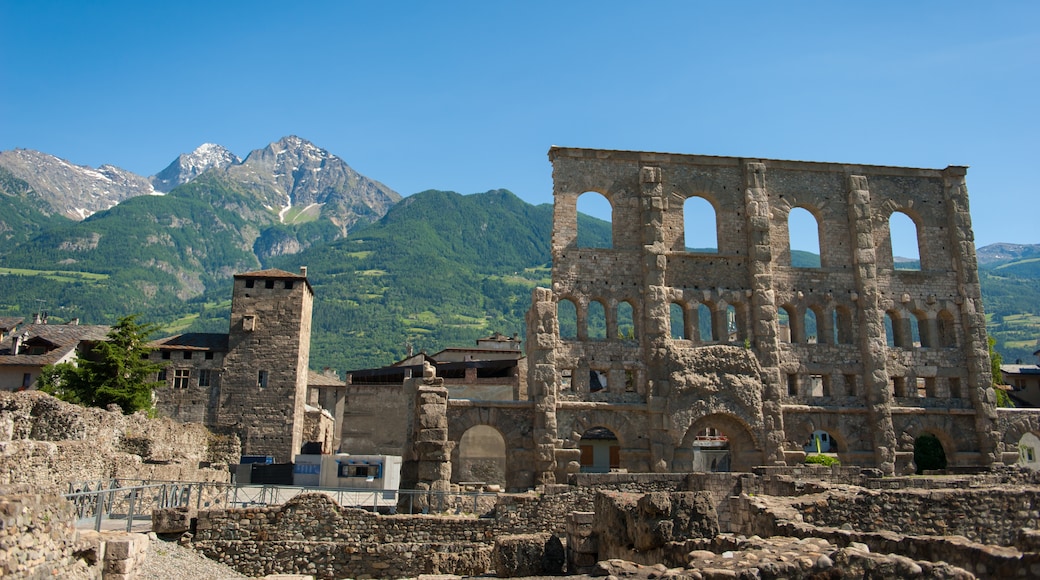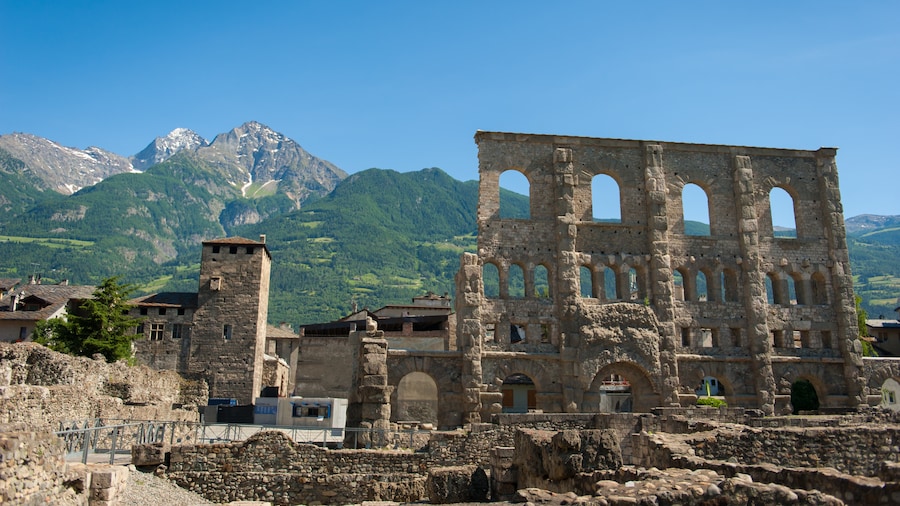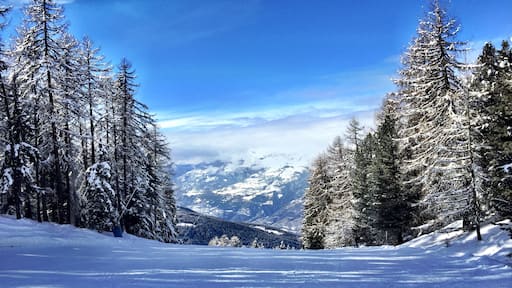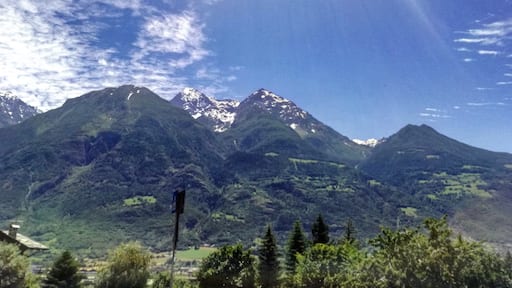A piece of ancient Rome in the Alps. That's what so many tourists say on their way back from a holiday in Aosta, a gem nestled among the soaring peaks of the Alps.
Its main monuments date back to the era of Augusta Praetoria, the Roman colony that left behind today's orthogonal city layout and the ancient stone walls that enclose the majority of the historic centre. Aosta is also known for its medieval ruins, churches, and abodes of the feudal lords who once contended for domain over the valley. The nearby ski slopes, the Gran Paradiso National Park and other wonders of nature make this destination the place to go in any season. Furthermore, thanks to the vast selection of hotels, spas, and sports and recreation centres, organising your holiday in Aosta will be easy!
Discover Aosta starting from the Arch of Augustus which marks the entrance to the old part of the city, facing east. A few metres before, the Buthier River is crossed by an ancient Roman bridge, still visible to the left of today's bridge. As you go down the decumanus maximus moving east-west (today Via Sant'Anselmo) you'll reach the heart of the old city. You enter the walls through the well-preserved Porta Pretoria.
Going down Via Abate Chenoux, following the walls, you reach Piazza Roncas. Here, across from the Renaissance palace from which the square gets its name, you'll find the Regional Archaeological Museum. Right behind the museum, a vast area that today is partially covered by the square adjacent to the cathedral was once home to the Roman Forum, the fulcrum around which life in Augusta Praetoria revolved. Via Croix de Ville and Via de Tillier mark off the area for shopping where there are numerous stores selling typical products from the valley. Around here, a coffee at the historic Boch pastry shop is a must, where you can try the traditional tegole, fine almond paste puff pastries.
After an indulgent stop at the pastry shop you set out again from Via Sant'Anselmo. From the nearby Porta Pretoria you reach Piazza Chanoux, the centre of modern-day Aosta, where the neoclassical Hotel de Ville is located—today the town hall—where each year for the past thousand years the spectacular Fair of St. Ursus has been held in late January. Hundreds of stands offer regional handicrafts and the typical products of the local cuisine.
Lastly, you can't miss a tour of the cathedral, easy to single out in the historic centre thanks to the two bell towers that rise up in the Roman Forum area. You should visit the cathedral together with its Treasure Museum, which contains the most important works.
Aosta has plenty to offer in the evening too. Spending an evening in St. Vincent is popular, among the green tables of the Casinò de la Vallée. For dinner you can count on the lightness of the tasty Mediterranean cuisine, where olive oil, fresh pasta, and fish are the stars of the show. If you're wine lovers instead, the best place to discover the flavours from the mountain vineyards that can reach up to 1200 m in altitude is on the square of the city's largest church. Don't waste another minute. Check out our holiday packages to Aosta now and get ready for a new unforgettable adventure!













